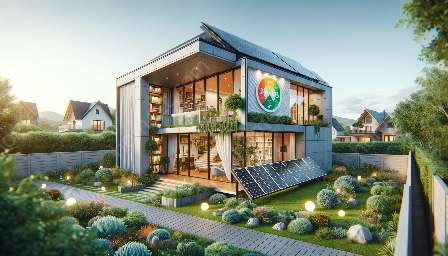Energy-efficient landscaping is an innovative approach to outdoor design that aims to minimize energy consumption and promote sustainable living. By carefully planning and implementing eco-friendly landscaping practices, homeowners can significantly reduce energy costs while creating a beautiful and functional outdoor space. This article will explore the concept of energy-efficient landscaping, its benefits, and practical tips for designing a sustainable and attractive outdoor environment.
Understanding Energy-Efficient Landscaping
Energy-efficient landscaping involves the strategic use of plants, trees, and other natural elements to create a sustainable outdoor environment. The primary objective is to maximize the natural benefits of the landscape to enhance the overall energy efficiency of a property. By utilizing smart design principles and environmentally friendly practices, homeowners can create a landscape that requires minimal maintenance and helps conserve resources.
Benefits of Energy-Efficient Landscaping
Energy-efficient landscaping offers a wide range of benefits for homeowners and the environment. Some of the key advantages include:
- Reduced Energy Consumption: By strategically planting trees and shrubs, homeowners can provide natural shade and wind protection, reducing the need for artificial heating and cooling.
- Improved Air Quality: Properly designed landscapes can act as natural air filters, removing pollutants and enhancing air quality around the home.
- Water Conservation: Choosing drought-resistant plants and implementing efficient irrigation methods can help conserve water and reduce overall utility costs.
- Wildlife Habitat: Energy-efficient landscapes attract diverse wildlife, creating a more balanced and sustainable ecosystem.
Designing an Energy-Efficient Landscape
Creating an energy-efficient landscape requires careful planning and consideration of various factors, including climate, soil conditions, and property layout. Some key strategies for designing an energy-efficient landscape:
- Native Plant Selection: Choosing native plants that are well-adapted to the local climate can reduce the need for excessive watering and maintenance.
- Strategic Tree Placement: Planting trees in the right locations can provide shade in the summer and allow sunlight to penetrate in the winter, helping regulate indoor temperatures.
- Water Conservation: Installing efficient irrigation systems, such as drip irrigation or rainwater harvesting, can minimize water usage while promoting plant health.
- Permeable Surfaces: Using permeable materials for pathways and driveways allows rainwater to infiltrate the soil, reducing stormwater runoff and erosion.
- Wildlife-Friendly Features: Incorporating bird feeders, bee-friendly plants, and nesting boxes can attract and support local wildlife, contributing to a more sustainable ecosystem.
Compatibility with Energy-Efficient Homes
Energy-efficient landscaping goes hand in hand with energy-efficient home design. By integrating sustainable landscaping practices with energy-efficient features in the home, homeowners can create a harmonious and eco-friendly living environment. For instance, solar panels can be complemented by strategically placed trees and shrubs that provide natural shade, reducing the need for excessive cooling during the summer. Additionally, landscaping elements such as green roofs and rain gardens can further enhance the energy performance of the home by promoting insulation and managing stormwater runoff.
Connecting with the Home
When designing an energy-efficient landscape, it's essential to consider the visual and functional connection with the home. Creating seamless transitions from indoor to outdoor spaces, incorporating outdoor living areas, and utilizing natural elements to complement the architectural style of the home can enhance the overall appeal and functionality of the property.
Conclusion
Energy-efficient landscaping is a sustainable and dynamic approach to outdoor design that not only benefits homeowners but also contributes to environmental conservation. By implementing smart design principles and embracing eco-friendly practices, homeowners can create a beautiful and energy-efficient landscape that enhances their quality of life while reducing their environmental footprint.


